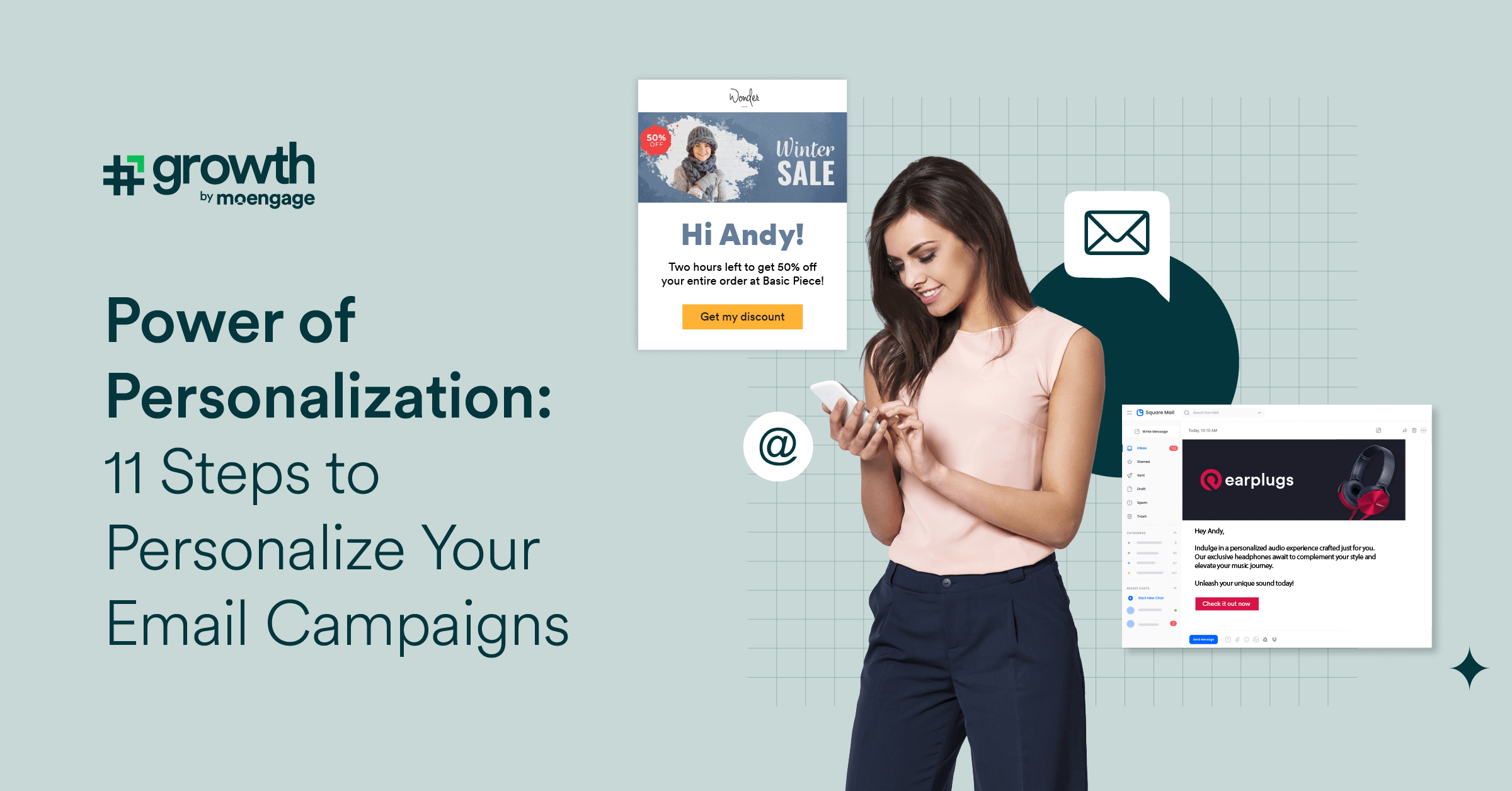“Dear <Your Name>, we have missed you! We are delighted to offer a limited-time deal only to you!”
Doesn’t it make each one of us feel a tad special when our name is on the email, and the offer is made only to us? Special enough to maybe engage and even purchase from the brand? That’s the power of personalization.
99% of marketers believe that personalization helps advance customer relationships, with 78% claiming it has a “strong” or “extremely strong” impact. In addition, 90% of U.S. consumers find personalized marketing content ‘somewhat’ to ‘very appealing’.
Personalization within email marketing means that your email is at least partially unique and even customized to the recipient. Some email campaigns can be highly personalized (such as writing an email from scratch for a single recipient). Other emails can be minimally personalized (such as including the name of the recipient).
Personalization helps build trust with the reader. This can lead to a greater likelihood of success with your campaigns.
Personalization makes readers feel like you have a unique solution to their unique problem, and you’re the best person to help them!
Let’s explore the various steps you can take to ensure your emails hit the mark every time.
Collecting Customer Data
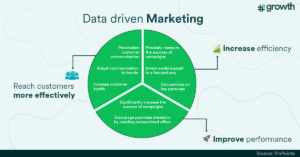
It is essential to know your customers before personalizing your emails for them. If you don’t know anything about them, sending them a personalized email is like shooting an arrow in the dark. You’re likely to have a very low success rate.
A little research can take you a long way. For example, if you’re trying to sell your accounting software, it becomes important to research companies that are big enough to be able to afford and need your service.
There are several ways you can collect customer data. You can hire a market research agency or set up an in-house research using one of the many survey tools that help you identify your target audience and create customized surveys for your business. Survey results should be able to tell you everything you need to know about your customer, right from their demographic data to their preferences and lifestyle habits.
However, consider local regulations and laws on data privacy and usage before conducting such surveys. For instance, the General Data Protection Regulation (GDPR) is the toughest privacy and security law globally. While it was drafted and passed by the European Union (EU), it imposes obligations on organizations worldwide if they target or collect data related to people in the EU.
Creating Segmented Lists
Once you have gathered customer data, the next step is to divide your customers into segments based on your data. For example, some of your prospects may already have purchased something from you. Other people may not even have heard of you. It would be a waste of time to send these two groups the same email, right?
Some factors based on which you can consider creating segmented lists for your emails include their position in your marketing funnel, their needs, previous purchases, potential ROI, age group, and so on.
Customizing Emails Using Dynamic Content
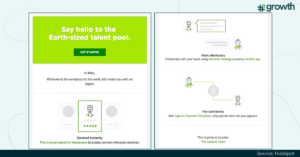
You want to send personalized emails based on the data you have of your prospects. However, doing so manually would take too much time. The best way to personalize emails en masse is by using dynamic content. Dynamic content automates personalization to some extent.
In the Upwork example above, the welcome email dynamically uses subscriber information collected at sign-up. It only takes a few tailored lines to strike a chord with your prospect.
Dynamic content is a way for you to change certain parts of your emails based on pre-defined criteria. You can change the text, images, or CTAs. What’s more, there are many automation tools available to help you create dynamic content.
Email Automation and Personalization
Manually sending out emails can be impractical after your business reaches a certain scale. Automation has become an important part of email marketing for brands that want to go the personalized way. Automation tools like HubSpot, Salesforce Cloud, and Sender can help disseminate personalized emails to thousands of prospects saving both time and money.
Benefits of email automation include creating customer personas and customized content. All emails are sent based on pre-defined rules that you can implement. All you need to do is set up the right workflow.
Consider the example of an email automation campaign to re-engage users who have abandoned their shopping carts. Once you have chosen your automation tool, you would need to identify your target audience (in this case, lost customers), your goal (to re-engage with them), and the processes you want to automate (like scheduling the email). Then, create your campaign assets, run tests, and monitor the campaign’s progress.
Here’s an example of how Swiggy pulls off a campaign for re-engaging with lost customers:
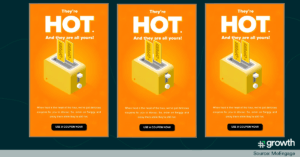
The brand smartly targets the relevant audience by adding an element of surprise in the CTA along with customized content. This campaign not only resulted in a higher open rate but also greatly helped engagement.
Performance Metrics to Track Customer Engagement
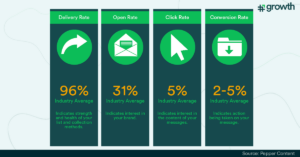
Customer engagement metrics can help you gauge how effective your emails are. This can help you make changes to your emails based on what’s performing well and what’s not.
Key metrics that should be tracked for email campaigns are open rate, conversion rates, click-through rate, bounce rate, email forwarding rate, and unsubscribe rate.
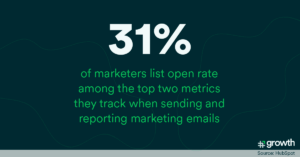
performance metrics. The idea behind using performance metrics is that they help monitor progress and refine personalized campaigns. This means that the brand would allocate resources to the right things.
A/B Testing for Effectiveness
Another step to ensuring the effectiveness of your emails is using A/B testing. This is a common marketing technique that involves sending two different versions (Version A and Version B) of your email to two different test groups. The better-performing email is then sent to the rest of the prospects.
A/B testing is like a litmus test before committing greater budgets to a specific personalized email campaign. With this test, you can ascertain higher open rates, click rates, and even conversion rates. There are numerous things marketers can play around with when A/B testing – subject lines, visuals, preview text, sender name, how you greet the customer, CTA, and more.
Here’s an example of how different CTAs are being tested by a brand:
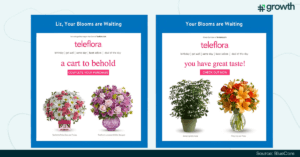
Writing Effective Subject Lines
What’s the first thing a reader comes across in an email? The subject line! It is important to use relevant lines so the prospect opens the email. You can use your subject line to spark curiosity and generate interest. Needless to say, you would only benefit from personalizing your subject line.
Some tips for catchy subject lines include:
- Create a sense of urgency and curiosity. Example: “This is what you may miss on!”
- Make the offer right at the start. Get to the point. Example: “Claim your deal today”
- Personalize your subject line based on the prospect’s job, preferences, etc. Example: “Congrats! You’re the top 1% of weekly shoppers”
- Keep them short and crisp. “What’s Hot? Find out!”
- Leverage tools and AI for personalization
- Avoid making tall claims that you cannot deliver
- Tell them what’s inside. Example: “Your report is ready to download”
- Make people feel special. Example: “You’re invited to our secret product showcase”
- Use numbers. Example: “$100 off on your next purchase”
- Ask questions based on browsing history. Example: “Dear <xyz>, were you looking for tablecloths?”
Eye-Catching CTAs
The call-to-action or CTA is an essential part of your email because it guides your prospect to the next step. Make sure your CTA aligns with the buyer’s journey.
A great way to end a personalized email is to craft eye-grabbing call-to-actions (CTAs). In fact, CTAs are so important that they can drive anything from conversion to purchase in seconds.
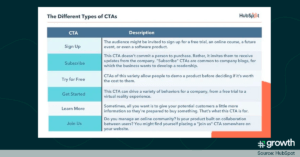
Note that it may be harder to directly sell your product to someone who is hearing about you for the first time. Instead, you can include a smaller CTA that takes the buyer to sign up for your newsletter or take them to a landing page with more information.
There are numerous types of CTAs – buttons, banners, forms, contextual links, pop-ups, and more.
Some general rules for writing effective CTAs are:
- Keep them simple but catchy
- Use action verbs
- Add in a touch of urgency or curiosity
Focus on designing it right – more negative space, simple, highlighted, and expressive of the core offering.
Here’s an example of an effective CTA used by Netflix that incorporates all the above rules. The reassurance in the copy adds to the magic.
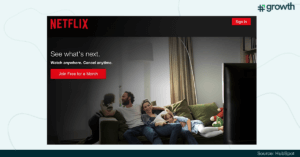
Behavioral Targeting
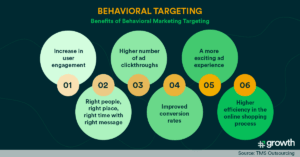
It is possible to send emails to your prospects based on their past behavior. Have they visited your website? Have they seen your ad? Have they created an account on your website?
Behavioral targeting can be leveraged to send more relevant emails to your prospects.
Some tactics for effective behavioral targeting include:
- Getting the right data from cookies, browsing history, purchase behavior, location, etc.
- Leveraging upsell and cross-sell opportunities for existing customers
- Offering personalized deals and discounts
- Creating persona-specific campaigns to target
Building Customer Loyalty
If your prospects like your emails, that’s a great way to build an ongoing relationship and towards customer loyalty. The goal of your emails should not be to sell to your prospects then and there, but to make them look forward to your next email (and hopefully take a few more steps towards making a purchase).
For creating this anticipation, personalizing content is key. This includes creating compelling subject lines, relevant custom greetings, body copy, and most importantly tailoring them based on the customer’s persona. For instance, for someone from Gen Z, you would want to use a more casual tone and language.
A brand that speaks volumes about creating loyalty via smart campaigns is Starbucks. Starbucks just hits home with its email with animated eye-catching visuals, focuses on members, and makes them a clear offer. This along with the terms that said, “This offer is exclusive to you and this Starbucks Rewards account and cannot be reproduced, transferred or used by anyone else.” truly leverages the power of email personalization to drive loyalty.
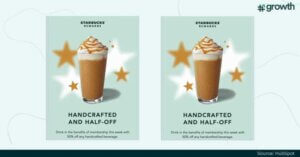
Re-engaging and Reconnecting with your Audience
Once you have your prospect’s attention, it is important to hold it. One way to do so is to keep sending relevant and customized emails as your customer moves from top-of-the-funnel to bottom-of-the-funnel.
This can be done by giving them customized discounts, product recommendations, festive or anniversary offers, and more!
The Future of Email Campaign Personalization
Email marketing has undergone many transformations over the years. Personalization is here to stay when it comes to driving impactful email marketing campaigns.
Emerging trends in email campaign personalization:
Hyper-personalization of Emails
More marketers are resorting to hyper-personalization to enhance user experience and drive ROI. Thanks to their ability to collect accurate data, more brands are targeting the right customers with the right emails.
Artificial Intelligence and Automation Taking Center-stage
Artificial intelligence has permeated every aspect of business. Email marketing is not far behind when it comes to leveraging AI for automation and personalizing at scale. Further, generative AI is taking customized content to the next level and helping optimize campaigns to maximum effect.
Mobile-first Campaigns Are In
81% emails are now opened on mobile phones. This number has led brands to focus on mobile-focused optimization of their email campaigns. This includes creating mobile-friendly designs, crisp content, and clear CTA buttons.
Emails are Going Interactive
Brands are switching to interactive emails with rollover effects, animated CTAs, surveys, among other things for a higher engagement quotient.
What steps is your brand taking to stay on top of the trends?
